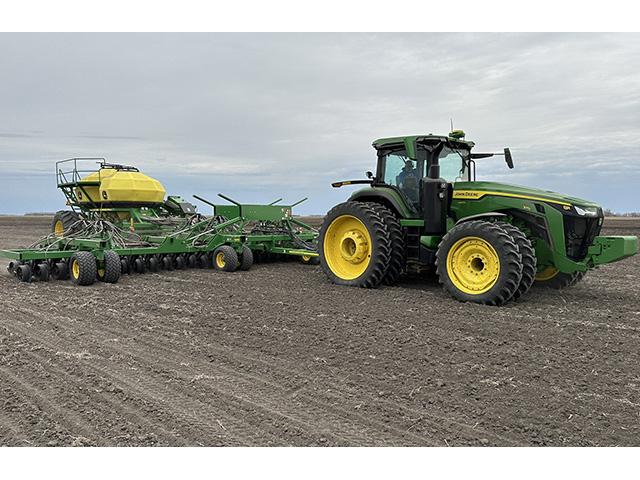Todd's Take
What if Trade Talks Succeed?
One day after a winter storm closed U.S. government offices in Washington, D.C., USDA's annual Agricultural Outlook Forum in Arlington, Virginia, kicked off Thursday with the traditional opening talk from USDA's Chief Economist Robert Johannson. (Read his speech here: https://www.usda.gov/…)
More detailed outlooks for the 2019-20 season were released early Friday, but already on Thursday Johannson made some interesting remarks about soybeans that deserve a closer look. First, USDA increased its estimate of U.S. soybean plantings in 2019 from 82.5 million acres (ma) in November to 85.0 ma -- a more reasonable estimate that's closer to offsetting the expected 3 ma increase in corn plantings.
It was also refreshing to hear USDA admit that the export outlook for the 2018-19 soybean crop remains challenging. As Johannson explained, U.S. soybean exports are down 13.5 million metric tons (mmt) or 496 million bushels (mb) in 2018-19 from a year ago -- a possible spoiler alert for Friday's export sales report. With Brazil now exporting soybeans, Johannson said, "We expect little export recovery for the remainder of the marketing year."
Put it all together and USDA appeared to be making a case that, in spite of its 910 mb estimate, ending soybean stocks in the U.S. could conceivably top 1 billion bushels in 2018-19 -- the most ever by a large margin. So far, USDA's assessment leaned clearly to the bearish side of prices.
The curve ball came on page six of the speech when Johannson said, "Under the expectation of continued Chinese tariffs, soybean prices are expected to rise modestly, up $0.20 to $8.80 per bushel as the market begins the multi-year process of working down large stocks."
P[L1] D[0x0] M[300x250] OOP[F] ADUNIT[] T[]
To understand just how odd that last statement is, we need to look back at the history of World Agricultural Supply and Demand Estimates (WASDE) reports, ending stocks-to-use ratios and soybean prices. Statistically speaking, $8.80 per bushel corresponds to a 12% ending stocks-to-use ratio, but USDA is expecting an ending stocks-to-use ratio near 20% for 2019-20 based on the assumption of continued Chinese tariffs.
Historically, soybean prices don't correlate very tightly to USDA's ending stocks-to-use ratios, so we can't say that the $8.80 prediction isn't possible, but it is certainly on the optimistic end of possibilities. I suspect one of the factors holding prices higher is the hope that a deal with China will be reached.
Outside the confines of USDA's gathering on Thursday, several media sources reported that trade representatives began the work of putting negotiated agreements in writing. If the reports are true, this begs the question: What might soybean prices and ending U.S. soybean stocks look like in 2019-20 if the U.S. and China do reach an agreement?
It would be reasonable to expect some additional post-agreement purchases, but where U.S. exports are already trailing expectations, new purchases probably wouldn't move the needle much in terms of reducing ending stocks in 2018-19. The most likely immediate benefit of a trade agreement would be the emotional relief of the possibility of $6.50 cash soybeans, which is a worst-case scenario.
In terms of actual numbers, a smaller planting in 2019 and a trade agreement with China would stop the build in the soybean surplus, but wouldn't necessarily do much to bring the surplus down. Like a snake that swallowed a rabbit, it will still take time for these tariff-related supplies to pass. Early Friday, USDA estimated 845 mb of ending soybean stocks for the new-crop season, which actually sounds like a reasonable estimate of ending supplies with a trade agreement.
Until potential soybean buyers can be convinced that smaller ending stocks are ahead, it will be difficult to expect significant buying interest from noncommercials. On that point, it is difficult to expect much relief from large ending soybean stocks before 2020 without some kind of help from adverse weather.
To sum up, USDA's new-crop price estimate of $8.80 a bushel, based on no trade agreement with China, is too high. However, if we assume a deal with China is reached, the bearish scenario of $6.50 is taken out of play and basis would have a chance to improve. In those circumstances, a cash average price of $8.00 a bushel is a more reasonable expectation for the start of 2019-20.
It cannot be said enough that these estimates are early and the one thing that neither of us can offer in February is certainty about the year ahead. USDA's outlook is a good exercise in anticipation, but the numbers don't deserve anything more than light pencil. With widespread snow on the ground, the most important events are still months away.
Todd Hultman can be reached at Todd.Hultman@dtn.com
Follow him on Twitter @ToddHultman
(BE/ES)
Copyright 2019 DTN/The Progressive Farmer. All rights reserved.



